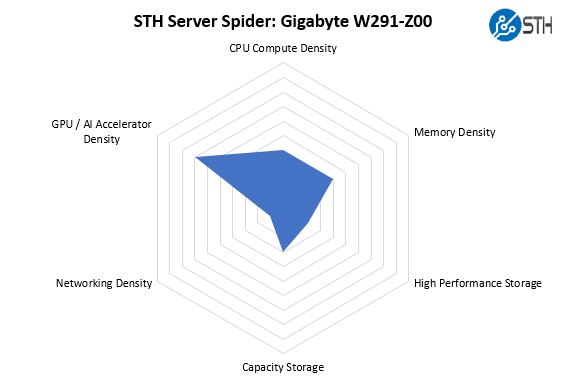Gigabyte W291-Z00 Power Consumption and Noise
We used our pair of Extech TrueRMS Power Analyzer 380803 units to take measurements at different points of the Gigabyte W291-Z00 use on 120V power in the embedded lab. Tower servers tend to spend more time at the edge in offices rather than in higher power data centers, hence why we do our testing at a lower voltage. Here are the figures:
- Idle: 0.11kW
- STH 70% Load: 0.91kW
- 100% Load: 1.12kW
- Maximum observed: 1.32kW
Idle with the system at 110W is relatively high for an AMD EPYC system. The Gigabyte W291-Z00 fans run at relatively high speeds even without GPUs installed which yields considerably more power consumption than we would expect at idle.
On the loaded side, this system takes over 11A on 120V power with 4x Tesla V100’s and an AMD EPYC 7551P. If you are using 110V or even if you are on a 120V 15A circuit, running a single system at this power level at full speed means you are very close to the maximum sustained usage rating for a standard North American office circuit.
Noise wise, we were well over 55dba in our testing, even at idle. Do not sit next to this machine if you are utilizing four high-power GPUs. Instead, lock it in a data center or equipment closet.
STH Server Spider: Gigabyte W291-Z00
In 2018 we introduced the STH Server Spider as a tool to show a machines objective core competencies at a glance. We now include it in all of our server system reviews.

The Gigabyte W291-Z00 is designed to highlight GPU compute. It is able to handle four high-end GPUs in what amounts to a 4U tower chassis. Without significant storage or networking options available with those four GPUs, one can see the focus of the server weighted heavily towards GPU compute.
Final Words
Overall, the Gigabyte W291-Z00 is an innovative tower server for GPU compute. We cannot recommend it as a workstation, despite some sources claiming as much. This is certainly the case where Gigabyte’s engineers were focused on how to cool four passive GPUs rather than trying to make a wholly refined mainstream server.
In the future, we would like to see an iteration of the Gigabyte W291-Z00 with options for higher-speed networking. We would also like to see storage options upgraded. With four GPUs and minimal local storage/ networking options, there is room to innovate.

If you are looking for not just a tower server, but an AMD EPYC based server that can cool four passively cooled GPUs, the Gigabyte W291-Z00 is currently the only option on the market, thereby also making it the best option.
The Gigabyte W291-Z00 performed well in our tests, and we look forward to seeing future versions in the STH test lab as Gigabyte has an awesome concept here.




Why not the MZ31? what, slightly larger dimensions?
https://www.gigabyte.com/us/Server-Motherboard/AMD-EPYC-7000
Gigabyte MZ31-AR0, 180w tdp, two SFP+, 16 RDIMM’s, PCIe 3.0 four x16 & three x8
Gigabyte MZ01-CE1, 180w tdp, two 1GbE, 8 RDIMM’s, PCIe 3.0 four x16 & one x8
Excellent and thorough review as usual. Love the tag
“the Gigabyte W291-Z00 … the only option … is the best option.” Lol 8)
Hi ekv – The MZ31-AR0 does not have enough room behind the PCIe slots to fit full-length GPUs. You can read more about it in our Gigabyte MZ31-AR0 Review.
Thanks for this review, Patrick! Great info. I don’t suppose you have four mi60’s kicking about? An all AMD test would be very cool.
Hi hoohoo – unfortunately not. I agree it would be interesting, but it is a bit hard for us to fund that type of project.